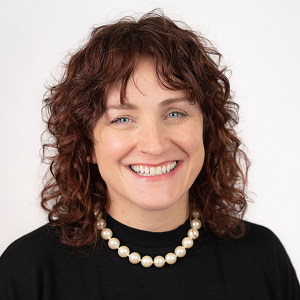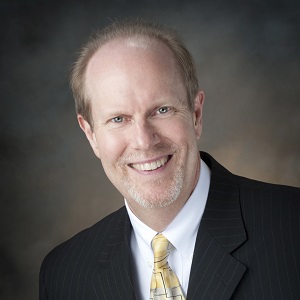Top-Level Takeaways
- Community charters help credit unions serve members beyond a specific employer or association.
- The scope of work allows credit unions to address challenges like housing affordability, financial inclusion, and economic resilience.
In a financial environment where people manage their money much differently than they did in the past, many credit unions have re-examined the best ways to serve their membership groups.
The rapid digitization of products and services has allowed institutions to expand beyond their physical boundaries and traditional narrower fields of membership to serve a wider membership base wherever members may be.
Such flexibility has proven essential to the survival of several institutions — but it hasn’t come without drawbacks.
“Community charters are one of the best things to happen to credit unions … and one of the worst,” says Danielle Milner, chief experience officer at Community Financial Credit Union ($1.6B, Plymouth, MI).
Among the best is the opportunity to celebrate the diversity represented under a community charter; however, developing a product suite that speaks to a diverse membership base can be more challenging than building on a clear set of values and needs present in an employee group.
On the other hand, serving too many SEGs can prove to be unwieldy, too. That’s the situation Brian Christensen faced when he started working at OneNebraska Federal Credit Union ($81.8M, Columbus, NE) in 1999.
“When I joined the organization, we had about 120 select employee groups that we were serving in a town of 22,000,” the CEO says. “Because we had that many SEGs, one of the first things the board directors wanted me to do was get a community charter.”
OneNebraska expanded and changed charter types — first in 2019 and again in 2021 — prompting the organization to eventually change its name to better reflect who it serves.
“We changed it from Columbus United to OneNebraska so if we open an office in another community people would feel welcome and not think they have to be from Columbus or have some special connection there,” he says.
Community Financial understands that struggle. Founded in 1951 to serve the employees of the Daisy Air Rifle Company, the credit union has evolved, changed its name, and expanded its field of membership until it eventually settled on Community Financial in 2003.
What Members Need HERE Or THERE

Today, Community Financial serves more than 83,000 members across the entire state of Michigan, a state that’s grown in both size and diversity, according to the latest census data. Figuring out the best ways to look after a population made up of so many demographics is a challenge.
It’s even more challenging when it seems everyone has struggled financially these past few years.
“Whether you make over $300,000 a year or under $30,000 a year, cash flow right now is a huge problem,” Milner says.
In response, Community Financial revamped its checking accounts to include a $50 balance buffer to help members avoid overdraft fees.
Community Financial has dropped punitive overdraft fees in favor of a checking account feature that helps members save money when their spending outstrips their budget. Learn more in “Flip The Script On Junk Fees.” Read more today.
“It comes down to the mindset of being here to solve community problems and not just offer products,” Milner says. “That’s where I think we become more relevant.”
Taking this a step further, the credit union recently began participating in Jefferson-style dinners with leaders from various parts of the community — healthcare, local government, tech, finance, area nonprofits, and more. Together, they brainstorm ways to address the social, political, and financial pressures Michiganders face.
OneNebraska also is dedicated to serving the distinct needs of its members.
The credit union serves more than 7,000 members across nine counties. As its nickname suggests, the Cornhusker State is largely rural — it’s population is just shy of 2.0 million. As such, reliable transportation often comes in the form of personal vehicles rather than public transit.
To that end, OneNebraska works closely with area car dealerships to provide quality auto lending services.
“This fits our membership because we’re blue collar,” Christensen says.
And as the credit union has worked to provide a more diverse suite of lending and savings products, it has gotten more sophisticated, attracting more members in the process.
“When I started 25 years ago, we were 21 million in size,” he says. “Now we’re 80 million. We’ve seen some good growth and good support from the community for sure.”
What Members Need EVERYWHERE
Affordable housing is another area of need in Nebraska as well as Michigan.
One of OneNebraska’s most notable partnerships is with NeighborWorks. Together, the duo work to supply affordable housing and reasonable home loans, especially for first-time homebuyers.

“These are the things our members need,” Christensen says. “They need down payment assistance. They need houses. There’s a horrible housing shortage.”
And when it comes to serving members, OneNebraska isn’t afraid to step over the line. The credit union has been a part of two or three participation loans in which it worked with local banks to provide interest-free money for infrastructure and for new housing subdivisions. Additionally, one of its staff members is on the board of Habitat for Humanity, so the credit union entered into an agreement with several banks to provide financing for Habitat applicants.
Similar to OneNebraska, Community Financial in Michigan has also adopted a housing and mortgage program to assist first-time homebuyers. Other notable initiatives include a pilot program aimed at helping cancer patients pause or eliminate medical debt and a push to address the financial challenges associated with domestic violence.
“In 2022, more than 100 women in Michigan lost their lives to domestic assault,” Milner says. “We have partnered with an organization called First Step, which is an intimate partner violence prevention organization, to develop a loan for domestic abuse survivors to be able to get out of their unsafe situation.”
To understand its members, Community Financial gathers feedback from a variety of sources. The credit union regularly hosts panels and educational workshops and conducts surveys to identify areas of improvement. That work helped it launched a Buy Now, Pay Later program in February as a post-purchase option that members can access directly through their mobile banking.
At the end of the day, it’s about keeping a finger on the pulse of the community and adapting to its needs.
“That’s what you want from your financial institution — a place where you feel like you belong and where they’re not going to look at you according to your economic status,” says Milner at Community Financial.
Christensen at OneNebraska echoes that sentiment.
“We’re working for them while they’re working at the plant or wherever,” he says. “We’re working hard every day to create opportunities that can make their lives better.”
